Diane’s Newsletter 18th September 2018
 is the 7th letter of the English alphabet.
is the 7th letter of the English alphabet.
According to wikipedia the man who founded, or discovered, G was Spurius Carvilius Ruga, a teacher, who lived in Rome around 230 BC. He decided that a letter was needed to distinguish the voiced C from the voiceless K, and he settled on what he called G. K was anyway not being used that much, C doing the work of both C and K, and the time was obviously ripe for a new letter. It is said that he moved G into a space caused when the letter Z was removed by Appius Claudius (who felt that Z was an unpleasant letter). Whether all of this is true or not is, of course, another question.
From a numerological point of view, G (especially as the first letter of a given name or surname) is most probably reserved and somewhat introspective. It can indicate a person who enjoys philosophical thought and discussion but who is also fairly secretive. Many people who have G as the first letter in their name can be overly anxious and, at times, lacking in confidence. They can lose themselves in their dreams, even though most of them are capable of thoughtful analysis. They are usually people who enjoy their own company, but who often tend to be a bit lonely and who find it difficult to both give and respond to affection.
The colour for G is purple.
Grilled Sweet Potatoes with Feta Cheese
This recipe is based on a recipe in Svenska Dagbladet – Grillad sötpotatis med getfärskost. I have, however, made a few changes. It is a great recipe for the barbecue, otherwise the potatoes can be grilled in the conventional manner.
The following recipe is sufficient for 4 people
3 large sweet potatoes
Olive oil
Salt and pepper
Chopped, fresh coriander
100 g feta cheese
1 dl toasted, chopped almonds
DRESSING
2 tablespoons lime juice
¼ cup olive oil
1 finely chopped clove of garlic (optional)
Pinch sea salt
 Peel the sweet potatoes and slice them lengthwise or on the diagonal into pieces about ½ centimetre thick. Brush with olive oil, sprinkle with salt and pepper and grill, either on a conventional grill or on a barbecue. Grill until the potatoes are cooked through and have the customary grill stripes (around 6-10 minutes each side on a hot grill)*.
Peel the sweet potatoes and slice them lengthwise or on the diagonal into pieces about ½ centimetre thick. Brush with olive oil, sprinkle with salt and pepper and grill, either on a conventional grill or on a barbecue. Grill until the potatoes are cooked through and have the customary grill stripes (around 6-10 minutes each side on a hot grill)*.
Place the grilled potatoes on a large plate. Top with diced feta cheese, almonds and coriander. Pour over the dressing. A great lunch recipe.
* For anyone without access to a grill (either conventional or barbecue) the sweet potatoes can easily be grilled/baked in a 200° oven. Place the sweet potato on an oven tray covered with baking paper (after brushing the vegetable pieces with oil and sprinkling with salt and pepper) and leave for about 30-35 minutes. Turn at least once, during the baking process.
It is also possible to first bake the potato pieces in the oven (200°) for 15-20 minutes, or until the potatoes are relatively soft, before grilling them. This method reduces the grill time.
(Image is from Svenska Dagbladet)
GUERNSEY

There are a lot of countries that begin with the letter G: Great Britain, Germany, Greece, Gibraltar, Greenland, Georgia, Guyana. . . and many others, so I was hardly restricted when making a choice. However, after much thought, I settled on Guernsey, mainly because my great-grandfather was born there.
As you probably already know, Guernsey is a small island in the English Channel. It covers no more than 65 square kilometres; its capital is St Peter Port; it has been settled for around 7,000 years; and it has a population of less than 65,000. Although the Romans called it Sarnia, the name Guernsey most probably comes from Old Norse: the -ey from a word meaning island, and the first part either from the name of a person who lived there or from the Old Norse word for pine.

Prior to 6,000 years BC England was part of the European continent, but then waters rose and land sank and England found itself on one side of the English Channel and France on the other. Several small islands – promontories that managed to keep their heads above water – became the Channel Islands.
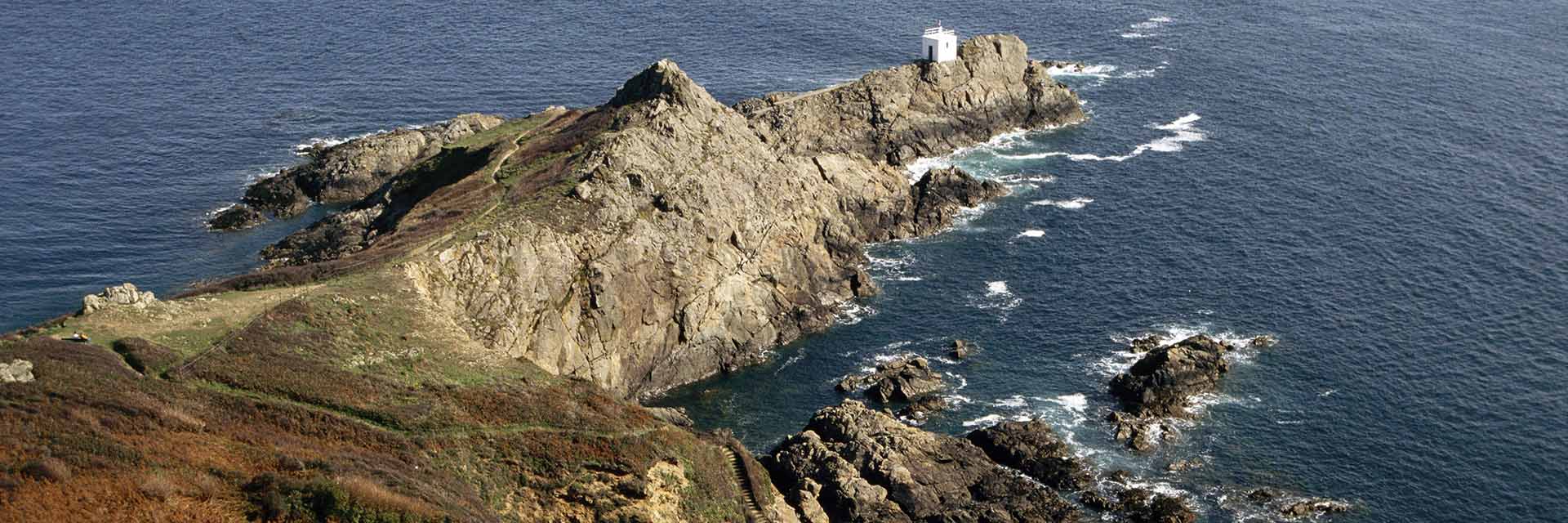
Guernsey has weathered pirates, mercenaries, England’s Civil War, wars between England and France and England and Spain, and, during the Second World War, it was occupied by German troops for almost five years. At the end of the fifteenth century Pope Sixtus IV proclaimed Guernsey to be a neutral country (with excommunication for anyone defying the proclamation). Now, in the twenty-first century, Guernsey is in many ways independent. It is not part of the European Union (though it does have special trade agreements with the Union); nor is it part of the United Kingdom (though its defence and foreign relations are managed by the United Kingdom). It is, however, autonomous in everything to do with internal affairs (and some external affairs). Many people on Guernsey would like to become completely independent while others have suggested joining with the neighbouring island of Jersey for all foreign affairs and retaining independence for domestic matters.
By way of interest, postal and telephone boxes are blue, and though there is no longer a railway there is a public bus service. Although English is the main language (up until the twentieth century most people spoke French), Guernésiais, the original Norman language is still spoken by a handful of residents.

Finance and tourism are now the two main occupations on the island, but in the latter half of the nineteenth century and the beginning of the twentieth century Guernsey was mostly known for its granite stone quarries. Stone quarrying had become important with the discovery of macadam in the first part of the nineteenth century, and by the middle of the century Guernsey was providing a large amount of the stone needed for roads. This is the point where my great-grandfather makes his entrance.

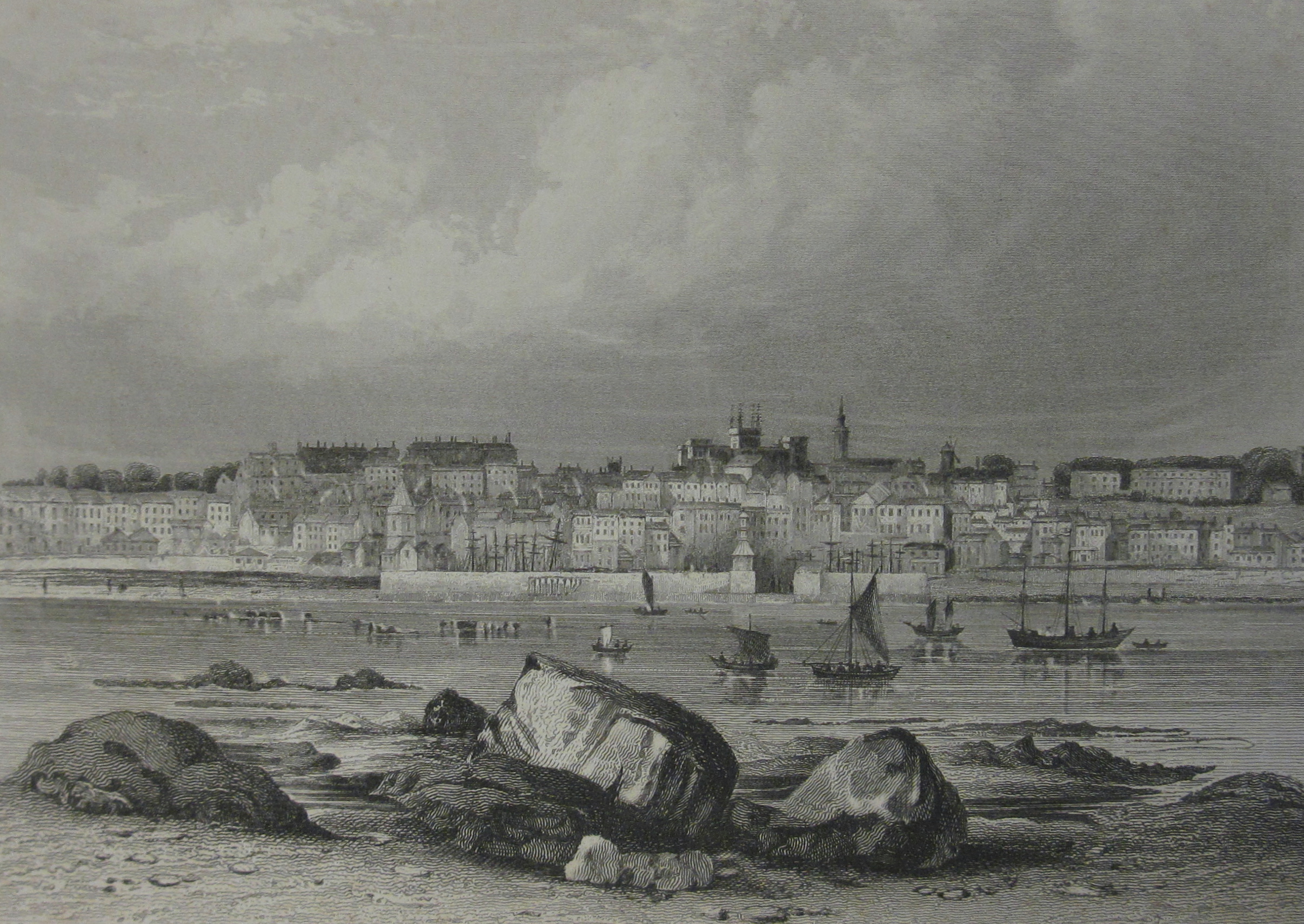
The potato famine in Ireland had already taken a frightening number of lives; there was no food, no work and no future. Those who could were fleeing to places like Canada and Australia. My great-great-grandfather heard that work was available on Guernsey, and he managed to scrape together the money to get himself and his family from Tipperary to England and then from England to Guernsey. He and his oldest son worked in the quarries for about four or five years, then in October 1854 John Francis O’Brien was born, and a couple of weeks later the family sailed for Australia.
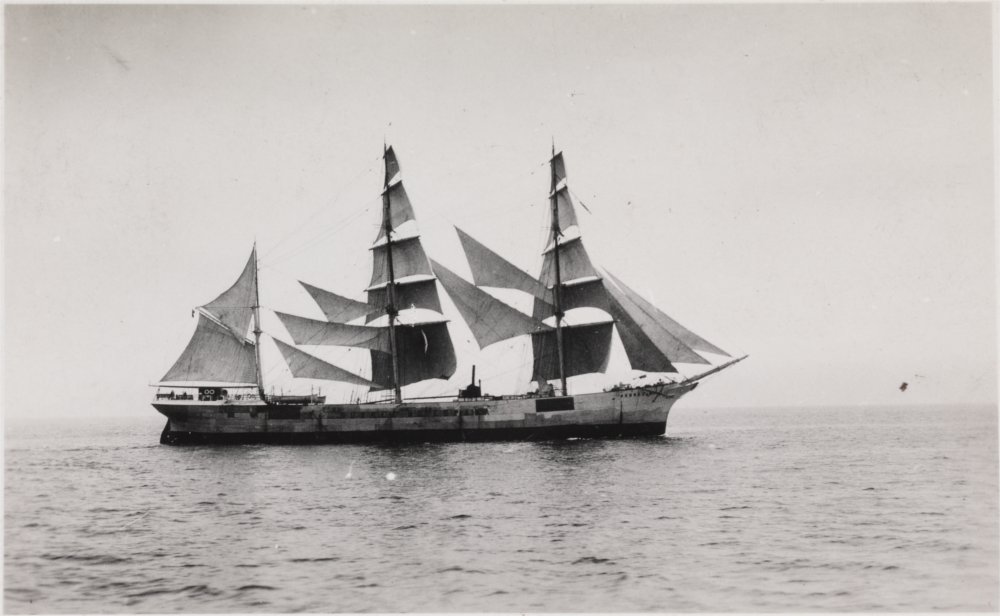
The Queen of England
Svenska
Guest Post
HUR MAN PRICKAR EN STINS FRÅN ETT SNÄLLTÅG MITT I SNÖIGA KALLA VINTERN.
GUNNAR MOREAU heter jag och är 83 år.
Har arbetat i restaurangbranschen hela mitt liv med att koka mat eller servera. Uppe i luften (SAS) rullande på marken (TR/SJ tågrestaurangvagnar) under vatten då jag var kock på u-båt när jag gjorde lumpen (värnplikten) m.m. m.m.
Som jag nämnde jobbade jag på tåg i restaurangvagnarna något år. Längsta sträckan var till Vännäs inte långt från Umeå. Resan tog över tio timmar och det är tveksamt om man får jobba så länge idag. Detta var 1952 i Februari och jag var 17 år och servitör.
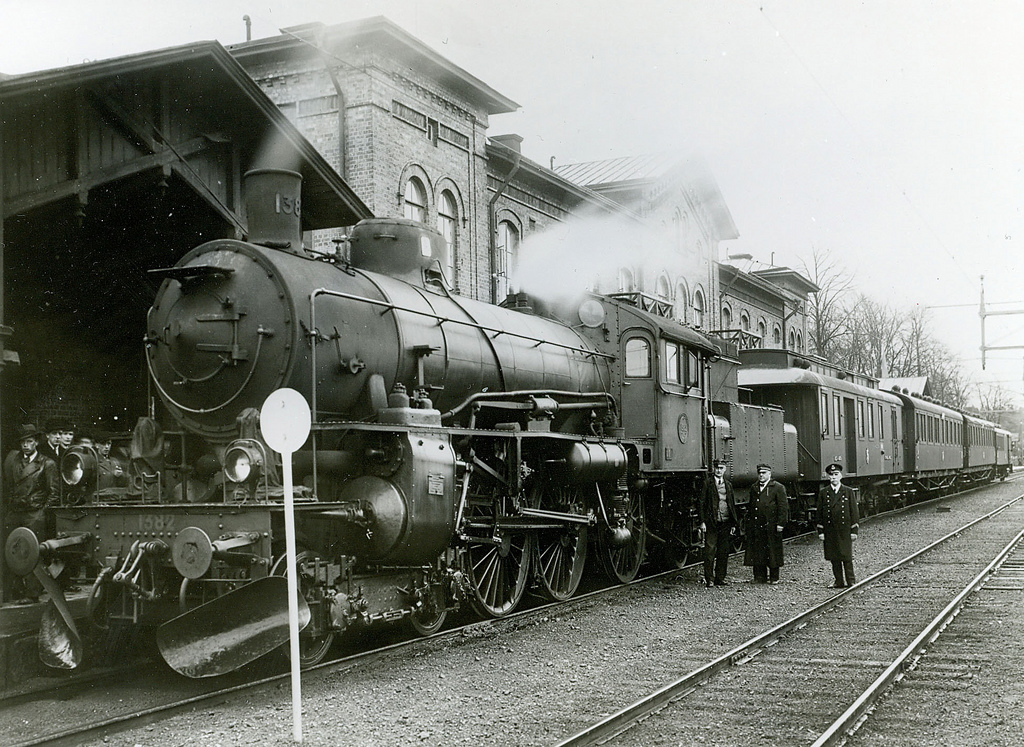
När vi skulle lämna Vännäs klockan 7 på morgonen, där vi hade inväntat ett natttåg med sovvagnar från övre Norrland, spårade loket ur efter 50 meter. Restaurangvagnen befann sig tursamt nog fortfarande vid plattformen. Hungriga nattpassagerare kryllade in som myror och vi slet som galärslavar. Dessbättre var stationsrestaurangen också öppen. Man hittade en stor lyftkran, fick loket på plats och vi drog iväg 6 timmar försenade. Maten började att ta slut och vi behövde fylla upp så mycket som gick. Men hur kontakta nästa station där vi skulle stoppa. Inga “nallar”, pc, faxar och naturligtvis ingen kommunikation mellan lokföraren och nästa station.
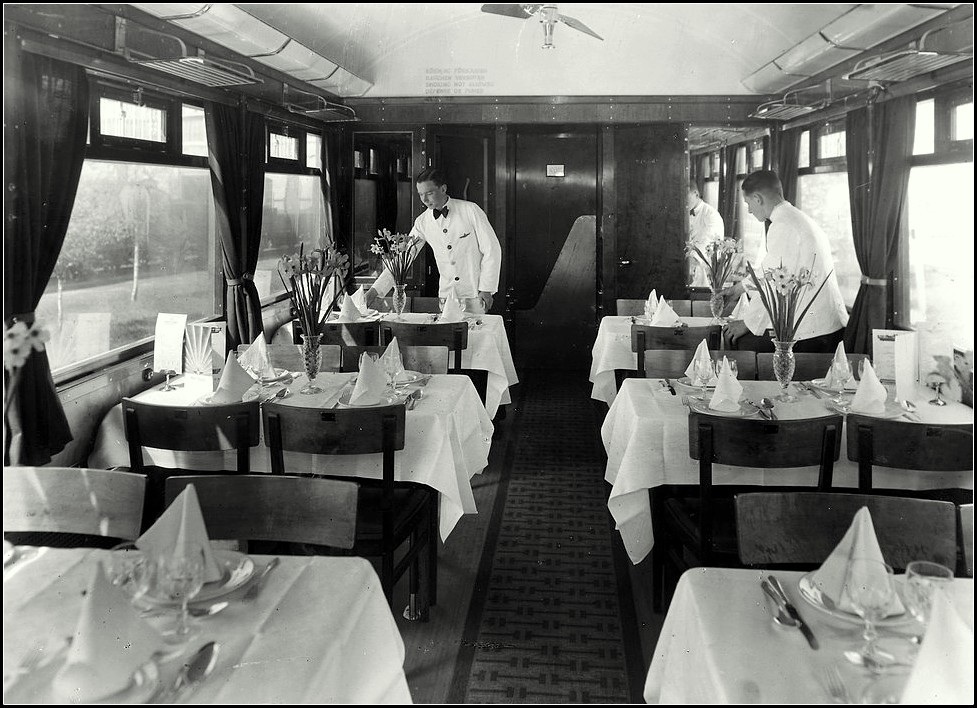
ATT VI ÖVERLEVDE PÅ DEN TIDEN ???? OTROLIGT.
Jag som har kork istället för hjärna kom naturligtvis på att vi skulle använda ett vedträd som man eldade köksspisen med, och där sätta fast en cateringlista. Jag föreslog att vi skulle göra tre sådana listor och försöka PRICKA STINSARNA SOM STOD OCH VEVADE MED SIN SPADE när tåget forsade förbi i 120/km. timman. När vi kom in till nästa station stod perrongen full med vagnar fullastade med mat ???? Alla stinsarna hade sett vedträden och ringt på sina telefoner och meddelat vår nödsituattion. En stins hade meddelat att vi träffat honom på ena låret…..och att han nu hade ett blått lår.
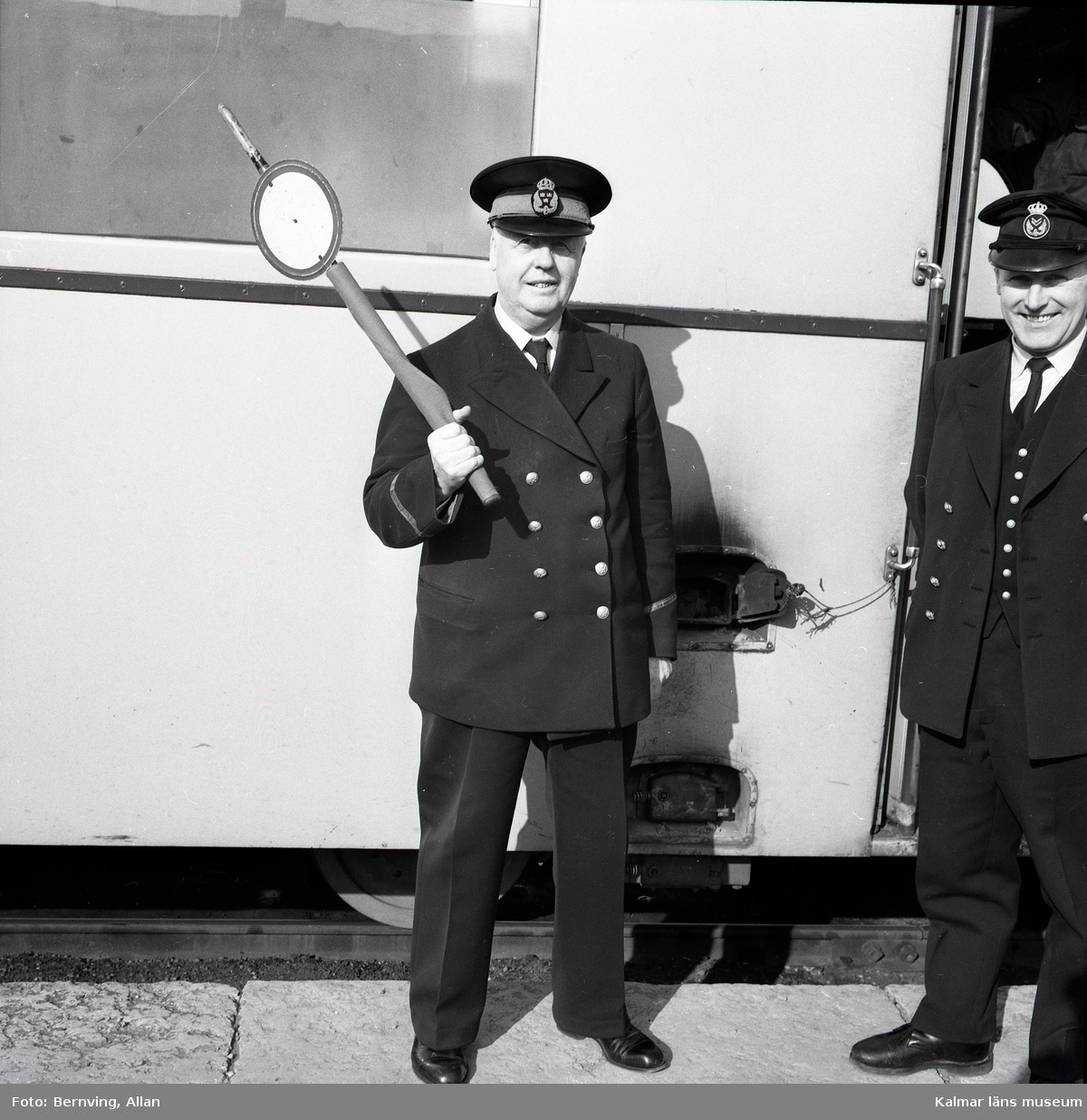
Jag, med mina 17 år…… sade till köksmästaren VI TAR ALLT OMBORD..kaxig som vanligt. Sagt och gjort och där fanns mat vart man än ställde stegen. Men när vi kom till Stockholm efter 24 timmar klockan 7 fanns inte en matbit kvar. Kassörskan, hon som satt i en liten bur och skrev notorna om Ni kommer ihåg, vågade inte gå ensam med kassan utan vi övrig personal gick runt omkring henne för att skydda.
När vi kommer in till personalchefen säger han GUNNAR DU VET VÄL OM ATT DU SKALL ÅKA G3 TILL GÖTEBORG KLOCKAN 16 ???? SKALL JAG….???? Javisst hem och sov med Dig nu, och glöm inte att duscha…….!!!!!!
HÄRLIGA TIDER. STRÅLANDE TIDER.
English
My name is Gunnar Moreau, and I am 83 years old. I have worked in the restaurant branch all my life, preparing and serving food – up in the air (SAS), on the ground (TR/SJ restaurant cars) and under the water as chef on a submarine (military service).
This is one of my many stories:
How to hit a station master from an express train speeding through a cold, snowy winter.
As I have already mentioned I spent several years working in the railway’s restaurant cars. The longest stretch was (from Stockholm) to Vännäs not far from Umeå. The trip took more than ten hours and it is doubtful if anyone would be allowed to work so long today. This was February 1952, and I was 17 and working as a waiter.

When we were about to leave Vännäs at 7.00 in the morning, after having waited for a night train from upper Norrland with sleeper cars, the engine derailed after only 50 metres. As luck would have it, the restaurant car was still level with the platform. Hungry night passengers milled around like ants, and we worked like galley slaves. Fortunately the station restaurant was also open.
A large crane was soon found, the engine was lifted back on to the rails and we set off after a six-hour delay. However, our stock of food was almost completely depleted and we needed replenishments. But how were we to contact our next stopping station? There were no mobile phones, computers, faxes and, of course, no way of the engine driver communicating with the next station.

It is unbelievable that we able to survive back then.
Having cork instead of a brain, I naturally got the idea that we could take one of the logs that we used as firewood for the stove and attach a catering list to it. In fact, I suggested that we should attach three such lists to three logs and then try to hit the station masters while they stood, holding up their signals, as the train rushed past at 120 km an hour. When we arrived at the next stopping station the platform was full of trolleys packed with food. All the station masters had seen the logs and had then got straight on to their phones and relayed our emergency situation. One station master mentioned, however, that we had managed to hit him on the leg and that he now had a blue thigh.

17 years old and cocky as always, I told the head cook that we would take everything on board. No sooner said than done and wherever we stood there was food. But when we arrived at Stockholm twenty-four hours later there was nothing left. The cashier, that is the lady who sat in a little cage and wrote out the bills (as you may remember), was terrified to leave the train on her own with the kitty, so we accompanied her for her protection.
When we met up with the chief of staff he said to me: Gunnar, you are aware that you’re on the G3 to Gothenburg, leaving at 16.00?
I answered: Shall I. . . ?
And he replied: Of course. Go home and get some sleep, and don’t forget to shower. . .
Magnificent, brilliant times.
Images:
Restaurant car from PerrasMotorNostalgi
Stinsen DigitaltMuseum
Tåget wikipedia
2 Replies to “Diane’s Newsletter 18th September 2018”
Mycket intressant och rolig läsning.
Tack, Angelika. Dina ord glädjer mig mycket.